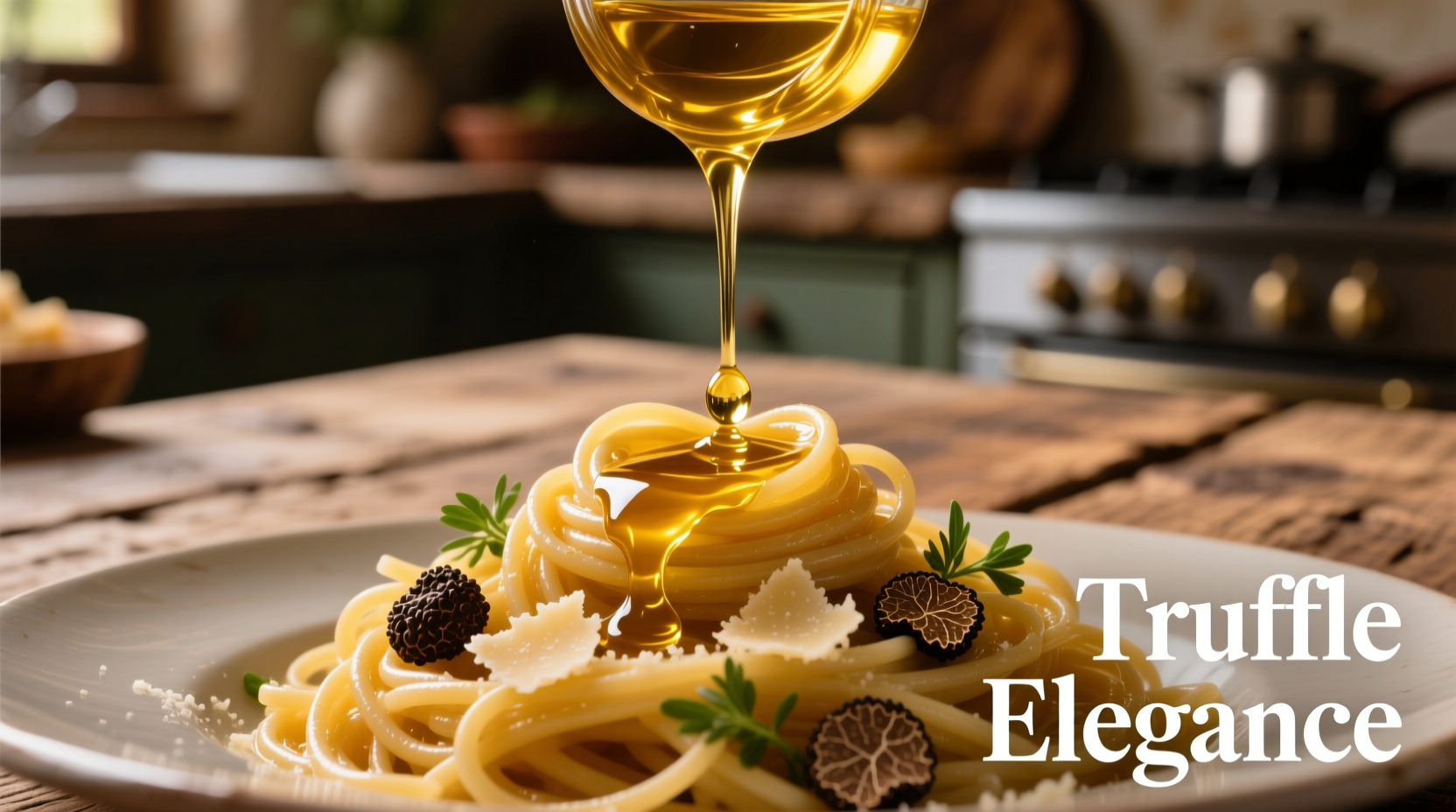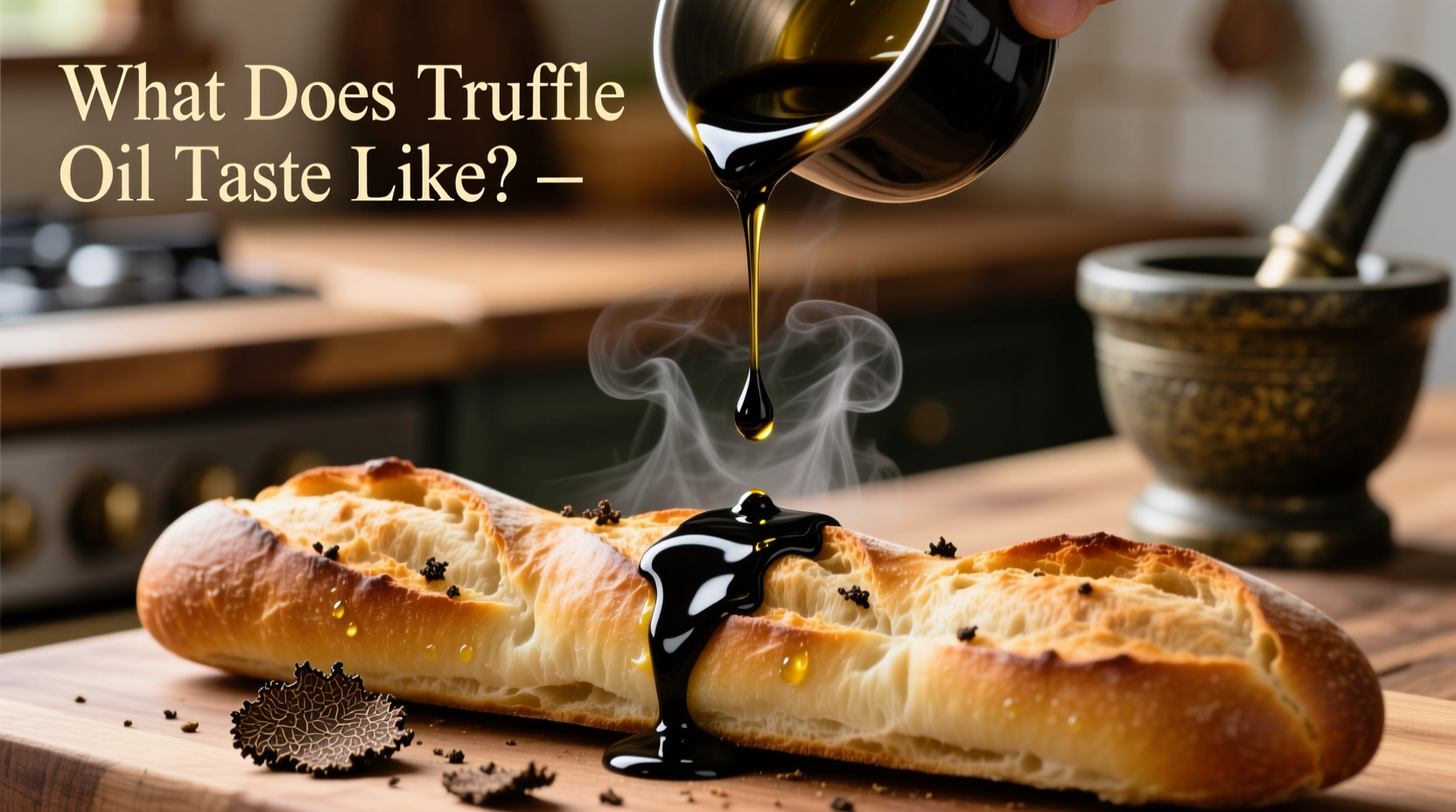The True Flavor Profile of Truffle Oil
When you drizzle truffle oil over your dish, you're experiencing one of culinary's most polarizing ingredients. Understanding what truffle oil actually tastes like requires distinguishing between authentic and artificial versions—a crucial difference that explains why this ingredient divides professional chefs and home cooks alike.
Real vs. Artificial: The Critical Distinction
Most truffle oil on supermarket shelves contains no actual truffles. Instead, manufacturers use synthetic 2,4-dithiapentane—a compound identified by scientific research as the primary aroma molecule in white truffles—to create that distinctive scent. Authentic truffle oil, made by steeping actual truffles in oil, delivers a more complex, earthy flavor profile that evolves on your palate.
| Characteristic | Real Truffle Oil | Artificial Truffle Oil |
|---|---|---|
| Primary Ingredients | Extra virgin olive oil + actual truffles | Olive oil + synthetic 2,4-dithiapentane |
| Aroma Complexity | Layered earthy, musky, woody notes | Single-note, overpowering scent |
| Taste Evolution | Changes as it warms in mouth | Remains constant, often chemical |
| Price Point | $30-$100+ per ounce | $5-$15 per ounce |
Sensory Breakdown: What to Expect When Tasting
When evaluating truffle oil, engage all your senses systematically:
- Aroma: Authentic truffle oil releases earthy, forest-floor notes with hints of garlic and wet soil. Artificial versions often smell like petroleum or nail polish remover at first whiff.
- Initial Taste: Real truffle oil offers subtle mushroom complexity that builds gradually. Synthetic versions hit immediately with an intense, almost medicinal flavor.
- Mouthfeel: Quality truffle oil coats the tongue with a smooth, oily texture that carries the flavor. Inferior versions can leave a chemical aftertaste that lingers unpleasantly.
- Finish: Premium truffle oil leaves a pleasant umami warmth, while artificial versions often finish with a harsh, one-dimensional note.

When Truffle Oil Works (and When It Doesn't)
Understanding truffle oil's limitations is crucial for successful culinary application. This ingredient shines in specific contexts but fails dramatically in others:
Best Applications:
- Finishing simple pasta dishes (truffle oil pasta with Parmesan)
- Drizzled over roasted vegetables (especially potatoes and mushrooms)
- Enhancing egg dishes (truffle oil scrambled eggs)
- Added to mashed potatoes for instant luxury
Avoid Using With:
- Hot dishes requiring long cooking (heat destroys delicate flavors)
- Dishes already featuring strong competing flavors
- As a substitute for fresh truffles in gourmet preparations
- When pairing with delicate seafood that could be overwhelmed
Professional Chef Insights on Truffle Oil
Many professional chefs avoid truffle oil entirely, not because of the ingredient itself, but due to market saturation with artificial versions. As Bon Appétit reports, renowned chefs like Daniel Patterson have publicly criticized synthetic truffle oil for "training people to like a flavor that doesn't exist in nature."
However, when used thoughtfully, even artificial truffle oil has its place. The key is understanding it as a flavor accent rather than a truffle substitute. Start with just 1/4 teaspoon per serving—you can always add more, but you can't remove it once added.
How to Choose Quality Truffle Oil
Follow these practical guidelines when selecting truffle oil:
- Read the ingredient list: Authentic versions list "black/white truffles" as an ingredient, not just "truffle flavor"
- Check the color: Real truffle oil often has visible truffle bits and a cloudy appearance
- Smell before buying: Quality oil should have a complex earthy aroma, not a single overpowering note
- Consider the price: Extremely cheap options are almost certainly artificial
- Storage matters: Keep in a cool, dark place and use within 3-6 months for best flavor
Common Misconceptions About Truffle Oil
Several myths persist about truffle oil that affect how people perceive its taste:
- Myth: Truffle oil tastes exactly like fresh truffles
Reality: Even authentic truffle oil captures only 20-30% of fresh truffle complexity - Myth: All truffle oil is artificial
Reality: Small-batch artisanal producers still make genuine truffle oil, though it's rare and expensive - Myth: Truffle oil improves with age
Reality: Truffle compounds degrade quickly—freshness is critical for best flavor
Practical Usage Tips for Home Cooks
Maximize your truffle oil experience with these professional techniques:
- Add truffle oil after cooking—heat destroys its delicate aroma compounds
- Use it as the final touch, drizzled over finished dishes
- Pair with simple preparations that won't compete with its flavor
- Store upright in a cool, dark place to preserve potency
- Start with small amounts—you only need 3-5 drops per serving
Understanding Truffle Oil's Place in Modern Cuisine
Truffle oil's controversial status reflects broader culinary trends. While Serious Eats analysis shows most commercial truffle oil is artificial, it remains popular because it delivers an accessible luxury experience. The key is managing expectations—view it as a flavor accent rather than a truffle substitute.
When used appropriately in small quantities on simple dishes, even artificial truffle oil can enhance your cooking. But for authentic truffle experience, nothing replaces the real thing. Understanding this distinction helps you navigate the confusing world of truffle-flavored products with confidence.











 浙公网安备
33010002000092号
浙公网安备
33010002000092号 浙B2-20120091-4
浙B2-20120091-4